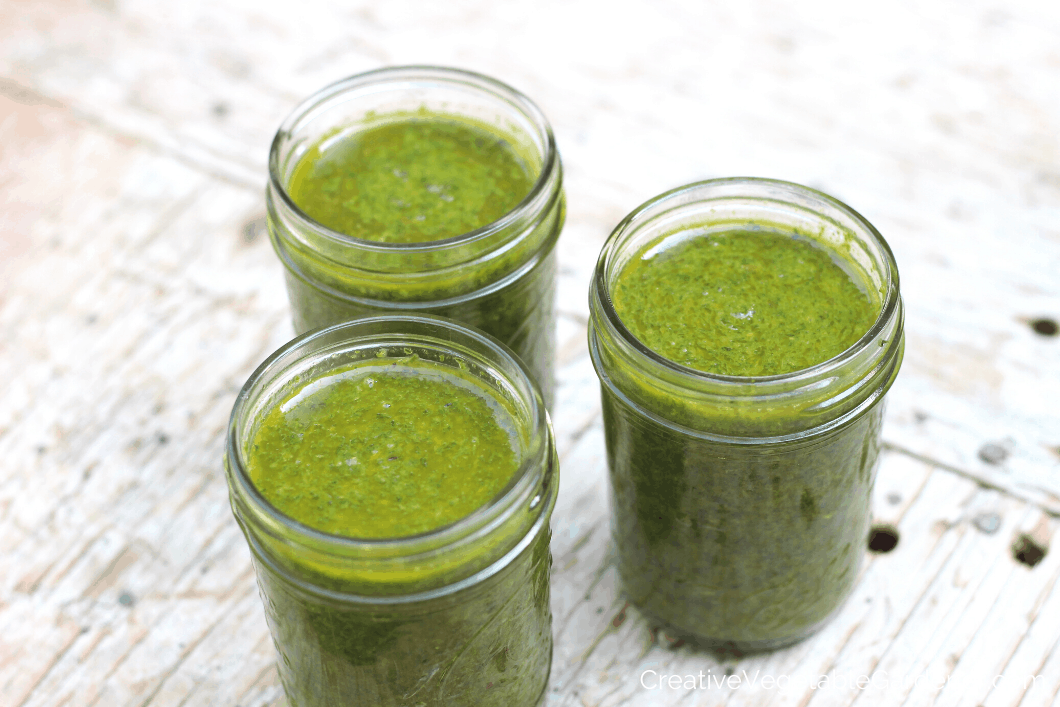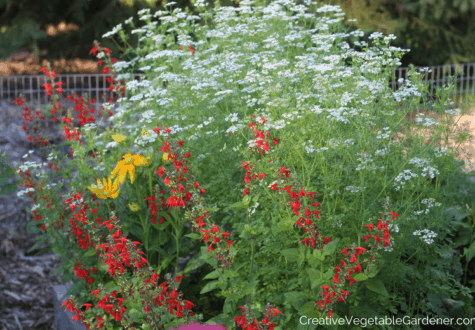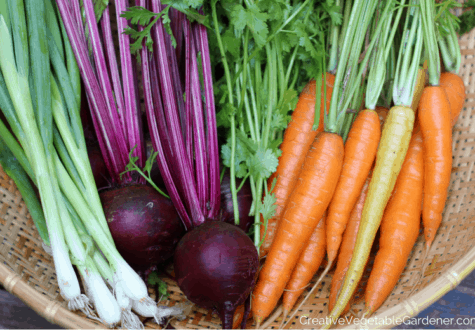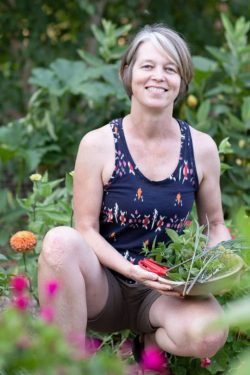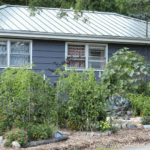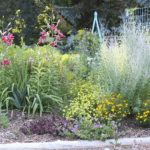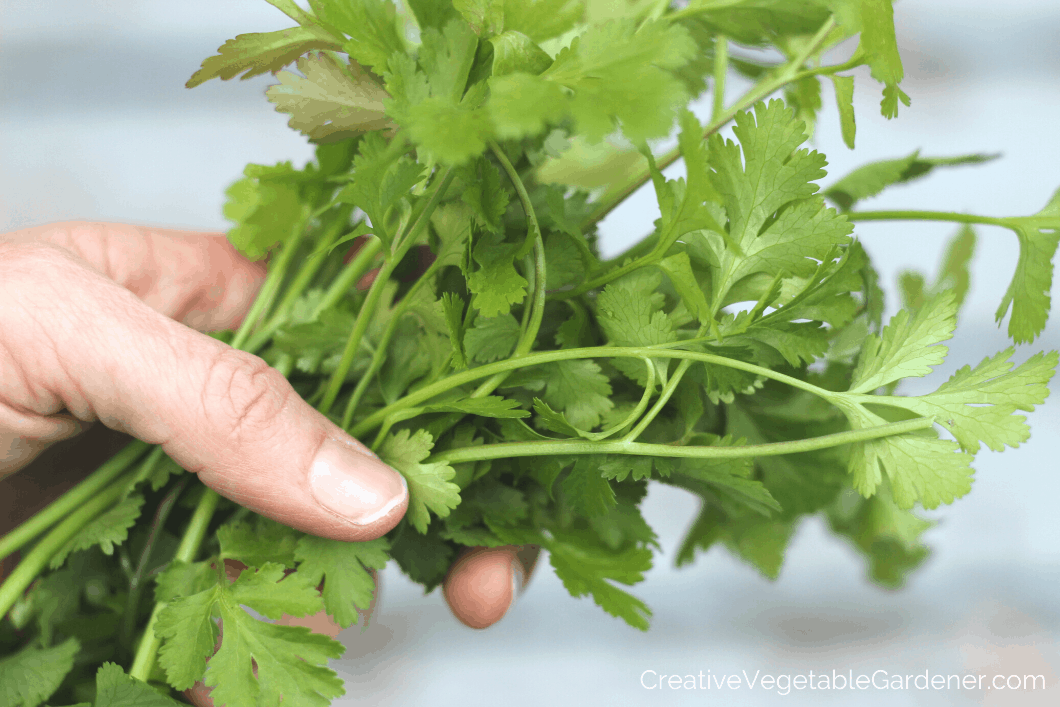
“Help, my cilantro always bolts! Why can’t I grow it well in my garden?” That’s a common plea I hear from gardeners everywhere in the spring and summer. And no wonder, cilantro bolting is a very common occurrence in those seasons, and it can be very frustrating.
In this article I’m going to share my best tips for prolonging your cilantro harvest for as many months as possible.
First, let’s get clear on what “bolting” means.
What is Cilantro Bolting?
Have you ever noticed that right around the beginning of summer your cilantro crop starts to send up some taller stalks in the middle of the plant? This tells you that the plant is getting ready to flower and set seed. This process is called bolting, or going to seed.
It’s a natural occurrence that signals the end of the plant’s life cycle. It abandons leaf production and starts producing flowers and seeds so it can spread itself around and live for another generation.
So, in the case of cilantro, it shifts its focus from pumping out more cilantro leaves for us to harvest for taco night and starts sending energy to the flowering process instead.
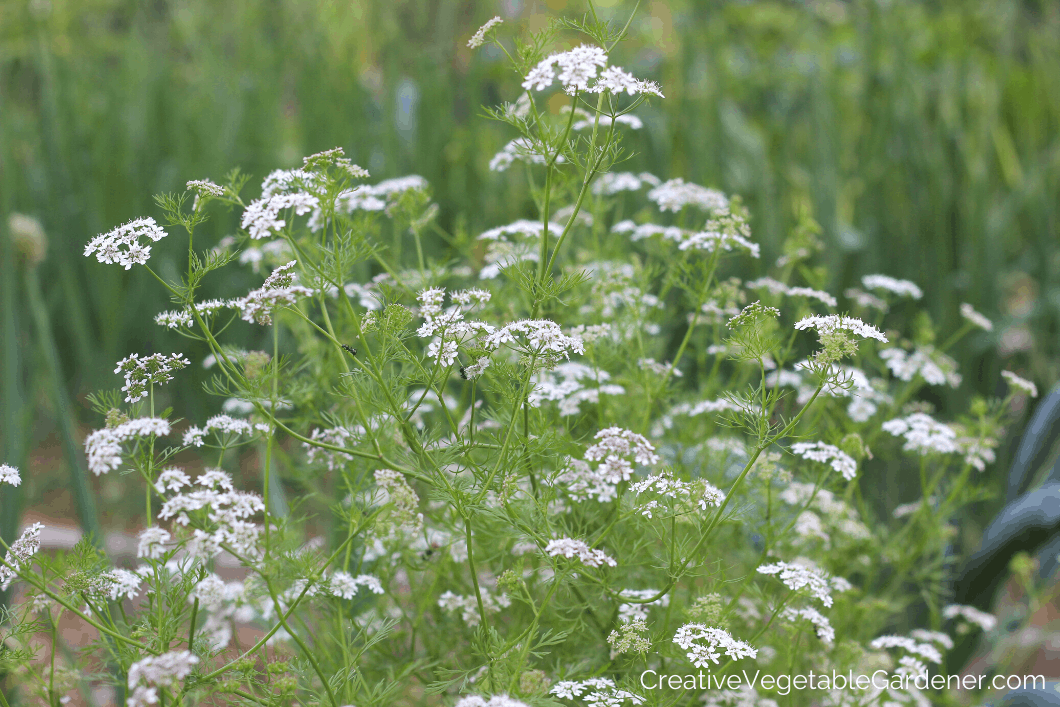
What Does Cilantro Bolting Mean?
Cilantro bolting is a natural process that is part of its lifecycle, but being familiar with the factors that influence bolting will help you devise some schemes to try to avoid it!
Temperature
Did you know the vegetables in our gardens have weather preferences just like us gardeners? Some vegetables grow best in the mild temperatures of the early spring and fall seasons – these are known as cool weather crops. And cilantro is one of them!
Once the warming temperatures of late spring and early summer arrive, cilantro isn’t quite as happy anymore, and will let you know that by starting to bolt. Increasing temperatures = increase in the chance of cilantro bolting.
Day Length
Many plants are day length sensitive, which means they are affected by the hours of light in a day. Cilantro is one of these plants and the lengthening days as we travel towards the summer solstice causes it to bolt.
More daylight = a signal to the plant that it’s time to flower. So, you might notice this happening more quickly to your cilantro as the season heads towards summer.
Moisture
Or really, lack of moisture! If your garden hits a dry period and you’re not watering consistently, cilantro could get stressed out and decide to start bolting. Dry conditions = stressed plant = bolting.
Now that you understand exactly what we mean by bolting and the most common causes, let’s move on to how to prevent it and what you can do if it does happen.
This article contains affiliate links.
Tips for Preventing Cilantro From Bolting
Even though bolting is a natural process that likely can’t be avoided entirely, there are still some techniques you can employ to get the longest possible harvest from your plants.
Plant early
Do not wait until late spring or early summer to plant your cilantro! Cilantro grows and thrives in the cool days and cold nights of early and mid-spring. You can start planting it four weeks before your average last frost. In my zone 5 garden in Wisconsin, I start planting cilantro around the second or third week in April.
And if you have a cold frame or low tunnel you can start even earlier. I plant cilantro in my cold frame about eight weeks before my last frost, around March 10.
In addition to allowing cilantro to soak up that early spring weather, the shorter days at this time of year will also help prevent bolting.
There are lots of other vegetables you can start planting about four weeks before your average last frost. Grab my free planting schedule template to map out a custom timeline for your garden zone.
Direct seed
There’s no need to start cilantro plants inside or purchase seedlings from a nursery. All you need is a packet of cilantro seed and you can plant it directly into the soil in your garden beds. If you keep the seeds moist by watering them once or twice a day they will germinate easily within 7-10 days.
Plant bolt resistant varieties
When you’re shopping for cilantro seeds read the catalog description or the back of the packet and look for varieties that are described as “heat tolerant” or “bolt resistant” and give those a try. Keep records so you know which ones perform the best in your climate.
The cilantro varieties that I plant over and over again each season are Caribe and Calypso. Note that the descriptions of these varieties contain the phrases “long-standing”, “bolt-tolerant”, “slowest to bolt”.
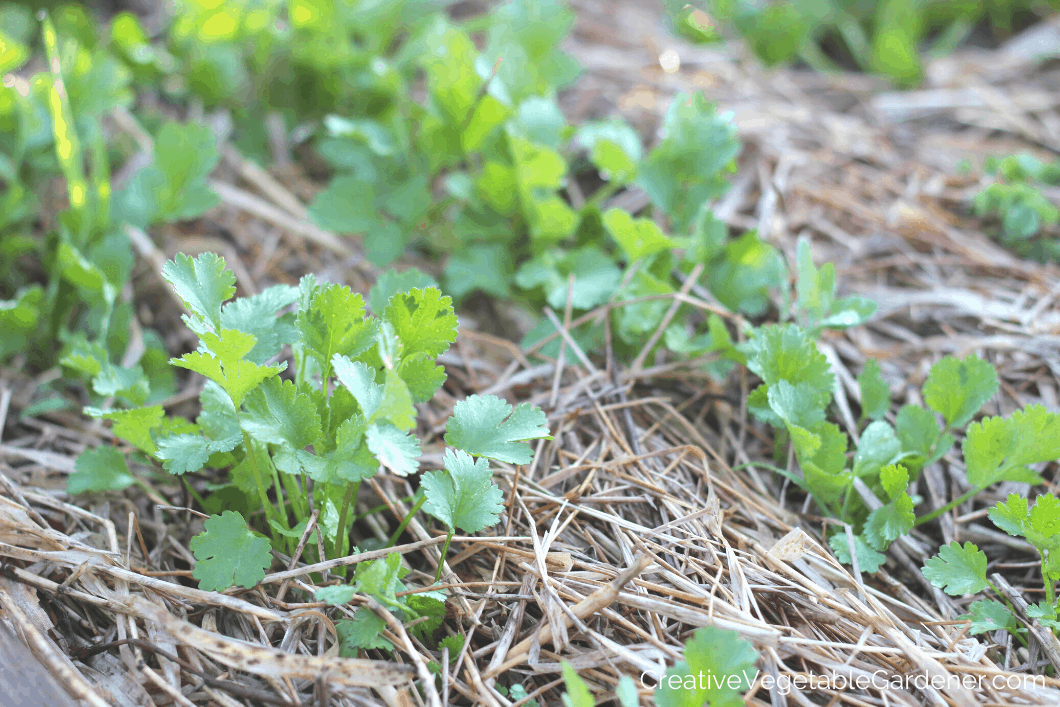
Succession plant
Succession planting means planting the same vegetable several times throughout the season for a more prolonged harvest. Instead of planting cilantro once in the spring, consider planting a new row every 2-4 weeks in the hopes that they’ll bolt at different times so you’ll be able to keep harvesting from some of the plants.
I generally take a break from planting cilantro in June and July because it’s hot and dry and the days are long – conditions we now know that encourage bolting.
Keep plants cool + moist
Once your cilantro is up and growing, make sure you give the plants the conditions that are favorable to their growth – cool roots and moisture. Mulch the soil in between the rows to trap in moisture and keep the soil cool. Give the plants about one inch of water per week (more if you have sandy soil or live in a hot climate). A dried out plant is a stressed one, which encourages bolting.
Get tips for watering your vegetable garden the right way.
Plant in partial shade
One year I visited some friends in late August and they served us fresh salad (with some cilantro leaves mixed in) from their garden for dinner. I had to know how they still had salad in such a hot time of year in Wisconsin. I discovered they had a very shady bed in their garden that allowed them to keep growing salad greens and cilantro all through the summer.
If you have a garden bed that gets more shade than others, this would be a great place to plant a succession of cilantro in mid-spring or early summer. You can also experiment with covering the planting bed with shade cloth as the season approaches summer, which will keep the vegetables and soil cooler and slow down bolting.

Plant again for fall
I’m a big fan of working with the natural preferences of the plants in my garden. And cilantro just doesn’t like the summer. That’s why I usually take a break from planting it in June and July.
But, the good news is, cilantro LOVES the fall weather, even more than it loves spring.
Growing cilantro in the fall is a completely different experience than growing it in the spring and summer. Read: much easier and more satisfying. Why? Because it never bolts.
And that makes sense, right? We know that cilantro is day length sensitive and bolts with the lengthening days. But, the fall season brings shortening days, which means the cilantro won’t be triggered to bolt. Amazing!
Cilantro bolting is also caused by higher temperatures, which usually isn’t an issue in the fall. Our gardens start experiencing cooler temperatures instead.
Another bonus is that cilantro is very cold hardy, so it can withstand the early frosts of fall. And if you decide to cover it with frost cloth, a cold frame, or a low tunnel you’ll be able to keep harvesting cilantro into the early winter. I usually harvest my last batch of cilantro in December in zone 5. Often after the first snow.
You can start planting cilantro about 6-8 weeks before your average first frost in fall. In my garden, my first fall planting of cilantro usually goes into the ground around the beginning of August. I continue to succession plant until about 3-4 weeks before my average first frost which is the beginning of September where I live.
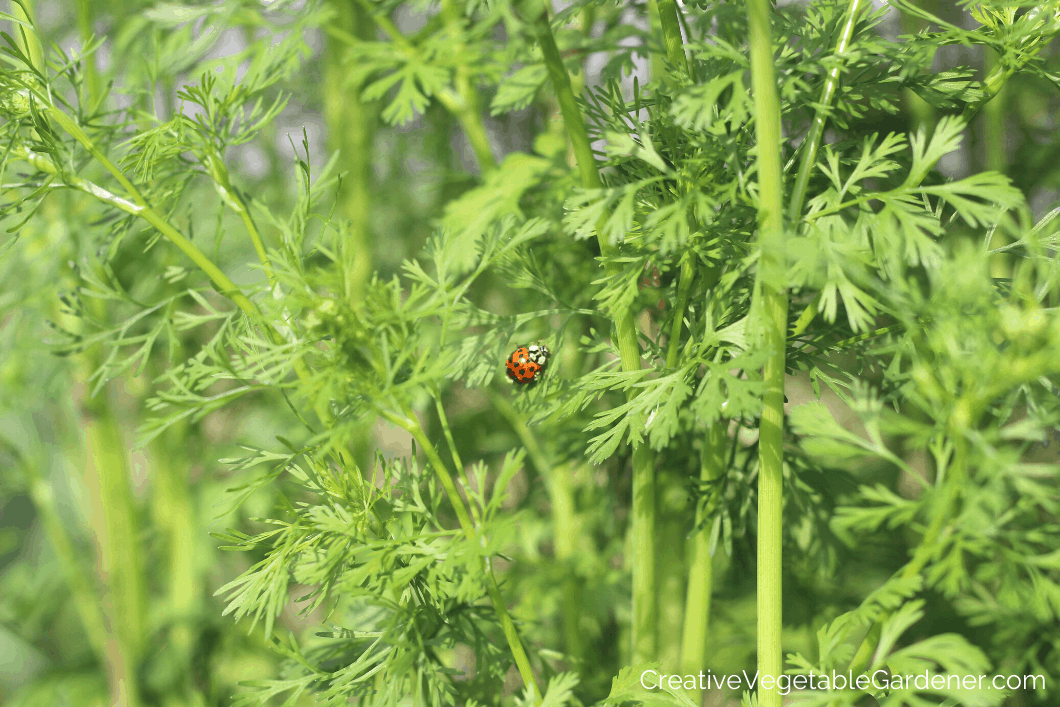
What to Do When Your Cilantro Bolts
Even if you employ all of the techniques above, you’re still going to have bolting cilantro. It’s pretty much unavoidable in summer. Here are a few choice of what you can do.
Let it flower
It’s pretty interesting to let vegetables flower and learn what their flowers look like. Cilantro flowers are beautiful – tall and lacy with delicate white flowers. They’ll also attract and feed your local pollinators and beneficial insects. If I have the room I’ll often let them flower for awhile before ripping them out and planting a new vegetable.
Let it go to seed
Did you know that cilantro is really two crops in one? Once cilantro is done flowering it produces seed. If you look closely they might seem familiar. That’s because cilantro seed is known as coriander! If you eat coriander at home you might as well let your plants produce seed and collect them for your spice cabinet.
Or, if you’re intrigued by saving your own seed for replanting later, cilantro is an incredibly easy plant to save seed from. Monitor the plants and you’ll notice they go from flowers, to green seeds, to seeds that start to turn brown as they dry out. In fact, they’ll start to look exactly like the seeds you have left over in the seed packet you bought.
It’s at this time, when they’re starting to dry out, that I clip off the tops of the plants and put them in a paper bag. I hang up that bag in a cool, dry place in my house and let the seeds dry further. A few weeks later I’ll remove the seeds and put them in a jar or envelope for planting later in the season. Easy peasy!
And if you’re a lazy gardener like me, sometimes I let the plant go to seed and then just drop its seeds in the bed. When the conditions are right the seed will sprout and you’ll have a new bed of cilantro with no labor on your part!

Replant that space with another vegetable
If you don’t want to let the cilantro plant flower and/or set seed, you can just pull it out of the garden when it starts to bolt. In fact, right around the time when things are starting bolting in my garden is when I start to feel like I’ve run out of room.
I’m usually all too happy to yank out that cilantro row that’s going to seed and replace it with my second planting of green beans or a succession planting of beets or carrots. Look on the bright side of your cilantro bolting – you can clear out some room to plant something else!

Harvesting Cilantro
When your cilantro plants are still small you can start harvesting by clipping off the outer, biggest leaves with a pair of garden shears or harvest scissors. (I like these and these best for harvesting.)
As the plants get bigger and fuller, you can treat them more like a cut and come again crop like salad mix. Take your scissors and cut down a section of the row, however much you need for whatever you’re making that day.
Make sure to leave about an inch of growth so the plant can push out more leaves for you to come back and harvest in a few weeks. (The included video shows me harvesting cilantro in this way in my garden.)
Preserving Cilantro
When the summer season arrives you might be faced with several rows of cilantro that are starting to bolt. This is when I go through the bed and do a big harvest. I often end up with more cilantro than I can possibly eat. That’s when I turn to some easy preserving to save my cilantro for later use.
Learn my favorite recipes and best tips for how to preserve cilantro.
I know a lot of us love cilantro, unless you’re one of the people who think it tastes like soap! So, it’s definitely worth it to put in a little extra effort to keep the harvest going for as much of the season as possible with the tips and techniques you learned in this article to prevent cilantro bolting early in the season.
Now go out there and get planting! And check out the resources below for more learning and skill building around growing herbs.
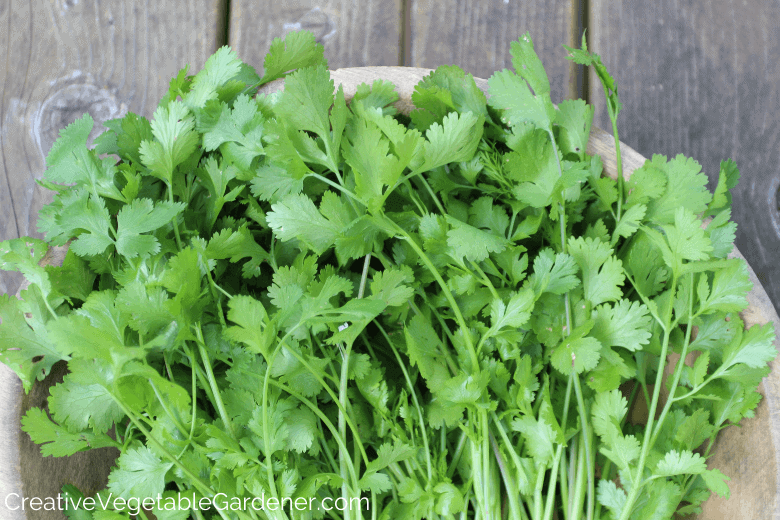
Additional Resources for Growing Herbs in Your Garden
FREE MINI COURSE
My free mini-course, Getting Started Growing Herbs in Your Garden, is a small taste of the below Masterclass. The mini-course features 5 videos and worksheets to help you:
- Learn why growing herbs is SO easy and worth it!
- How to choose which herbs to grow in your garden.
- Where to plant your herbs so they’ll be successful.
MASTERCLASS
My how-to video series, All About Gardening with Herbs: Your Guide to Growing, Harvesting, Cooking With, & Preserving a Bounty of Herbs, is my most popular class! If you’re ready to delve more deeply into the wondrous world of growing your own herbs, find out more here.


